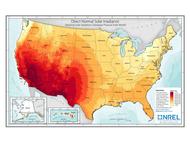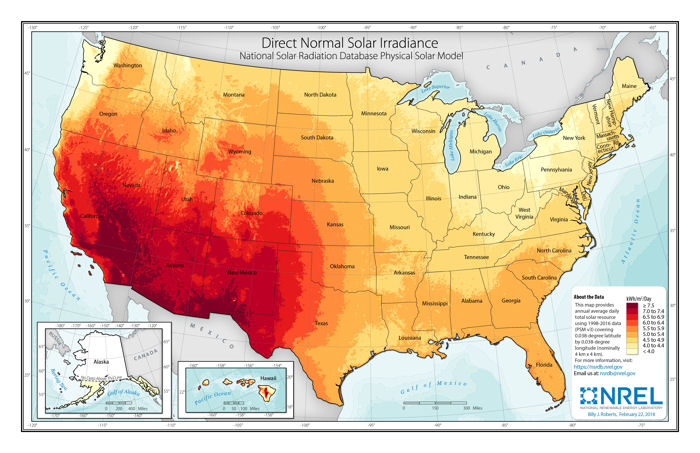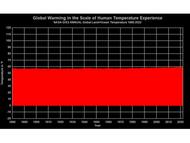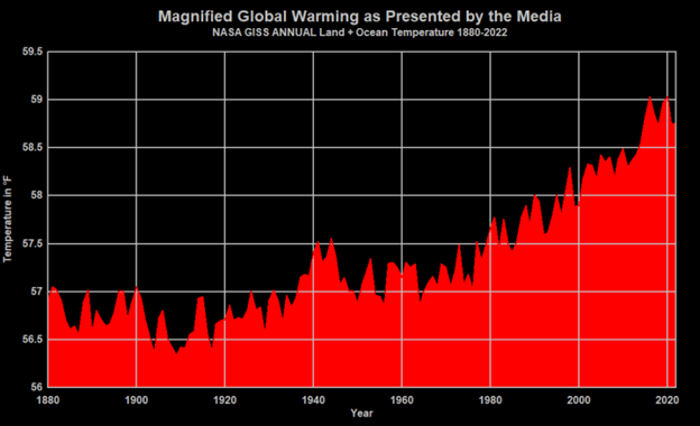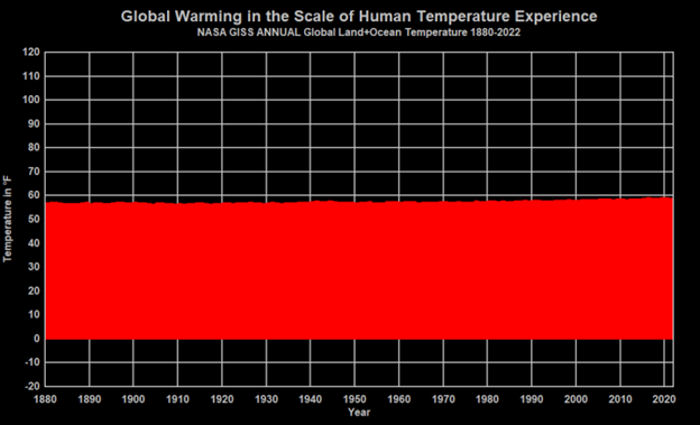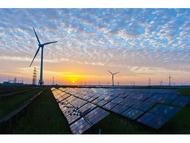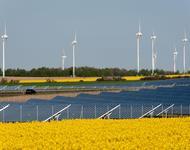Climate Change
Two days before Halloween, 2011, New England was struck by a freak winter storm. Heavy snow descended onto trees covered with leaves. Overloaded branches fell on power lines. Blue flashes of light in the sky indicated exploding transformers. Electricity was out for days in some areas and for weeks in others. Damage to property and disruption of lives was widespread.
That disastrous restriction on human energy supplies was produced by Nature. However, current and future energy curtailments are being forced on the populace by Federal policies in the name of dangerous “climate change/global warming”. Yet, despite the contradictions between what people are being told and what people have seen and can see about the weather and about the climate, they continue to be effectively steered away from the knowledge of such contradictions to focus on the claimed disaster effects of “climate change/global warming” (AGW, “Anthropogenic Global Warming”).
People are seldom told HOW MUCH is the increase of temperatures or that there has been no increase in globally averaged temperature for over 18 years. They are seldom told how miniscule is that increase compared to swings in daily temperatures. They are seldom told about the dangerous effects of government policies on their supply of “base load” energy — the uninterrupted energy that citizens depend on 24/7 — or about the consequences of forced curtailment of industry-wide energy production with its hindrance of production of their and their family’s food, shelter, and clothing. People are, in essence, kept mostly ignorant about the OTHER SIDE of the AGW debate.
Major scientific organizations — once devoted to the consistent pursuit of understanding the natural world — have compromised their integrity and diverted membership dues in support of some administrators’ AGW agenda. Schools throughout the United States continue to engage in relentless AGW indoctrination of students, from kindergarten through university. Governments worldwide have been appropriating vast sums for “scientific” research, attempting to convince the populace that the use of fossil fuels must be severely curtailed to “save the planet.” Prominent businesses — in league with various politicians who pour ever more citizen earnings into schemes such as ethanol in gasoline, solar panels, and wind turbines — continue to tilt against imaginary threats of AGW. And even religious leaders and organizations have joined in to proclaim such threats. As a consequence, AGW propaganda is proving to be an extraordinary vehicle for the exponential expansion of government power over the lives of its citizens.
Reasoning is hindered by minds frequently in a state of alarm. The object of this website is an attempt to promote a reasoned approach; to let people know of issues pertaining to the other side of the AGW issue and the ways in which it conflicts with the widespread side of AGW alarm (AGWA, for short). In that way it is hoped that all members of society can make informed decisions.
Climate Change News
Solar Capacity Factor - ORIGINAL CONTENT
- 3/26/24 at 06:00 AM
The ‘Energy Trilemma’ And The Cost Of Electricity – OpEd - Highlighted Article
- 3/21/24 at 06:00 AM
Anomaly vs. Temperature - ORIGINAL CONTENT
- 3/19/24 at 06:00 AM
Time to Retire the Term “Renewable Energy” from Serious Discussions and Policy Directives: Part II - Highlighted Article
- 3/14/24 at 06:00 AM
Net Zero Emergency Power - ORIGINAL CONTENT
- 3/12/24 at 06:00 AM
The Retreat from Net Zero - Highlighted Article
- 3/7/24 at 06:00 AM
Green New Dangers - ORIGINAL CONTENT
- 3/5/24 at 06:00 AM
The Folly Of Climate Leadership - Highlighted Article
- 2/29/24 at 06:00 AM
Energy User Responsibility - ORIGINAL CONTENT
- 2/27/24 at 06:00 AM
Trillions Spent on ‘Climate Change’ Based on Faulty Temperature Data, Climate Experts Say - Highlighted Article
- 2/22/24 at 06:00 AM
Grid Responsibility - ORIGINAL CONTENT
- 2/20/24 at 06:00 AM
Models, Myths, And Misinformation Undergird Climate Models And Energy Policy - Highlighted Article
- 2/15/24 at 06:00 AM
Renewables Responsibility - ORIGINAL CONTENT
- 2/13/24 at 06:00 AM
Costing the Green Grid: Current and Future Technology - Highlighted Paper
- 2/8/24 at 06:00 AM
Global Warming: Observations vs. Climate Models - Highlighted Article
- 2/1/24 at 06:00 AM
-
Headlines
Search Headlines-
Weekly Climate and Energy News Roundup #616
- Watts Up With That
- October 21, 2024
-
Will wind and solar hammer hydro in Washington State?
- CFACT
- October 21, 2024
-
Naturally Hot, Exaggeration Not
- Master Resource
- October 21, 2024
-
N. Hemispheric tropical cyclone activity is well-below avg in 2024 – If climate change is ‘supercharging’ North Atlantic, why isn’t it having same effect in N. Pacific & Indian Ocean basins?
- Climate Depot
- October 20, 2024
-
Electrifying Everything Means Higher Energy Costs For Consumers. These DOE Numbers Prove It (Again)
- Substack
- October 20, 2024
-
Grand Wind & Solar Transition Delivers Crushing Retail Power Bills
- Stop These Things
- October 20, 2024
-
Indonesia Dumps Climate Politics in Favor of Energy Security
- Watts Up With That
- October 20, 2024
-
Our Energy Future: Conserve to Convert
- Watts Up With That
- October 19, 2024
-
Time to cool the heated climate rhetoric on hurricanes
- CFACT
- October 19, 2024
-
Scientists Find No Change in Global Warming Rate Since 1970 Despite “Hottest Year Ever” in 2023
- The Daily Sceptic
- October 18, 2024
-
Climate Cash Grab: The Truth Behind Big Oil Lawsuits
- Irrational Fear - Substack
- October 18, 2024
-
First they came for the climate skeptics
- Climate Discussion Nexus
- October 16, 2024
-
Hurricanes, Climate Change, and Statistical Sleight-of-Hand
- Real Clear Energy
- October 15, 2024
-
Florida Has Relatively Low Electricity Prices and No “Green” State Policies
- IER
- October 15, 2024
-
-
Scholars Wanted
 The Right Insight is looking for writers who are qualified in our content areas.
The Right Insight is looking for writers who are qualified in our content areas.








